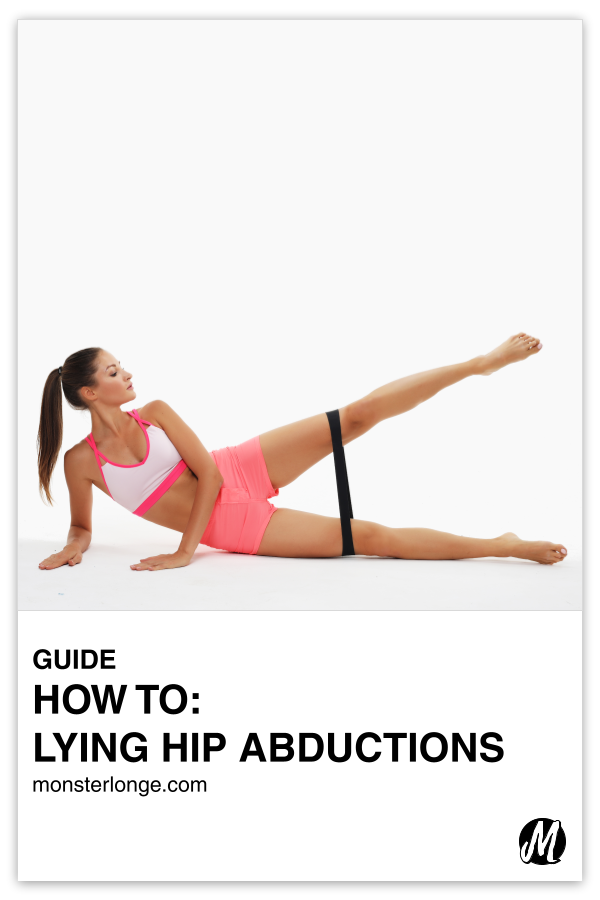
How To: Side-Lying Hip Abductions
Have knee pain that isn’t brought on by having your legs broken from a gambling debt or some other kind of freak injury?
Then you more than likely have weak glutes.
The glutes are the largest muscle group in the body and consist of three muscles, one of which is the gluteus medius. The gluteus medius is responsible for leg abduction, or lifting your leg to the side, as well as stabilization of the pelvis. When this muscle is weak, the right side of the pelvis, for example, drops as you lift that leg to stand on the left one as you walk or run. Then with all your weight bearing on that leg, your knee caves in toward the other knee, which compresses the kneecap. It’s this chronic stress of the knee that eventually results in knee pain thanks to the change in the body’s biomechanics.
That’s not only where hip abduction exercises come in handy to help strengthen the gluteus medius but also where side-lying hip abductions come in particularly useful. Per a recent study comparing different side-lying hip strengthening exercises, side-lying hip abductions beat out clamshells and side-lying hip abductions with external rotation. Side-lying hip abductions were superior in activating the gluteus medius with little activation of the tensor fasciae latae and anterior hip flexors.
So yeah, you should probably do ’em!
INSTRUCTIONS
1). Lie on the ground on your side with your legs extended and feet stacked on top of each other in neutral position.1i.e. pointed straight rather than in flexion or dorsiflexion.
2). Bend your lower arm underneath your head so your forearm can serve as a cradle for the full weight of your head. Take the other arm and let it rest on top of your leg or plant your hand flat on the ground for additional support.2NOTE: To make the movement more challenging and involve more of the core and glutes, you can assume a side plank position by lining your elbow up directly under your shoulder and then propping yourself up on your bent forearm as you squeeze your glutes, brace your abs, and lift your hips off the ground.
3). Turn the foot of the top leg inward so the toes are pointing toward the ground and breathe out while raising your leg and keeping it straight. Stop when you feel tension in your lower back or obliques.3NOTE: Turning the foot inward instead of keeping it straight helps to activate the gluteus medius rather than the hip flexors. Also, the hip can only abduct 45-degrees. Trying to raise your leg any higher takes the hip out of the movement and brings other muscles into play. So terminate elevation where instructed rather than worrying about trying to raise the leg as high as possible!
4). Pause.
5). Breathe in while lowering your leg in a slow and controlled manner back down to the starting position.
6). Repeat.
NOTE: For extra resistance, if necessary, use ankle weights or loop a band around your ankles, knees, or forefeet, keeping in mind that the lower the band is placed the more glute activation will occur. You may also add another band in a separate location for even more resistance. For example, if you have a band around your knees, place a second band around the ankles. For added resistance, another option is the combined use of ankle weights and bands.
For a workout routine that possibly includes side-lying hip abductions, as well as other exercises geared specifically to your goals, training experience, injury history, and available equipment, then find out more HERE
Glossary: abs, clamshells, exercise, exercise equipment, glutes, goal, muscle, muscle group, routine
- How To Eat Healthy During Thanksgiving - November 20, 2024
- Weight Loss Tip: no.2620 - November 20, 2024
- Is Going To The Gym Once A Week Enough? - November 19, 2024
